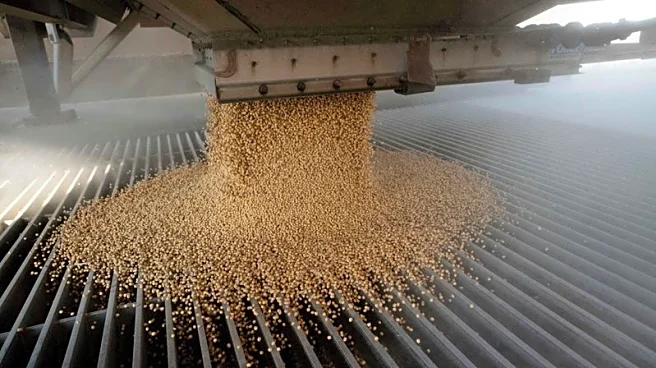What's Happening?
The U.S. Department of Agriculture (USDA) is set to release its first crop report since mid-September, following a 43-day government shutdown. This report will provide updated estimates for corn and soybean
yields, which are crucial for market analysts and traders. During the shutdown, the absence of the World Agriculture Supply and Demand Estimates report led to a wide range of analyst estimates, creating uncertainty in the market. Analysts have relied on various sources, including private forecasts and local market prices, to gauge the situation. The USDA's report is expected to clarify the actual yield sizes, which were initially projected to be record-breaking. The shutdown also affected the reporting of crop export sales, particularly impacting trade negotiations with China, a major buyer of U.S. soybeans.
Why It's Important?
The resumption of USDA data releases is significant for the agricultural market, as it provides a definitive picture of crop yields and export sales. This information is vital for traders and buyers to make informed decisions. The shutdown had led to speculation and varied estimates, affecting market stability. Accurate data from the USDA can help stabilize prices and provide clarity on supply levels. The timing is crucial, as the U.S. exports a significant portion of its soybeans between October and January, and China accounts for a large share of these exports. The release of this data could influence trade negotiations and market dynamics, especially in light of recent tensions between the U.S. and China.
What's Next?
The USDA plans to release a compiled list of large daily sales reported by exporters during the shutdown. This will help provide a clearer picture of demand and supply dynamics. Analysts will closely monitor the USDA's upcoming reports to adjust their market positions and forecasts. The data could impact cash prices and bidding strategies, especially if the actual yields differ significantly from previous projections. The agricultural sector will be watching for any changes in trade policies or agreements, particularly with China, as these could further influence market conditions.
Beyond the Headlines
The shutdown highlighted the dependency of the agricultural market on government data for stability and accurate forecasting. It also underscored the importance of transparency in trade negotiations, especially with major partners like China. The situation may prompt discussions on improving data collection and dissemination processes to prevent future disruptions. Additionally, the reliance on social media and private forecasts during the blackout raises questions about the credibility and accuracy of alternative data sources.












